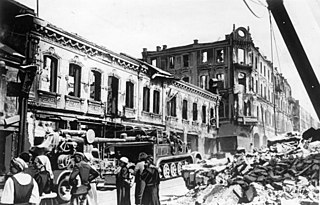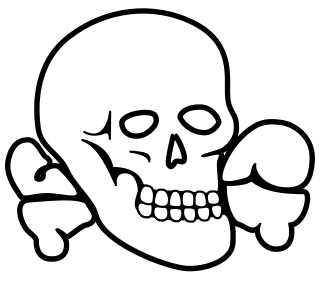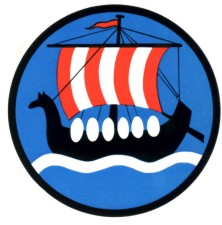
GeneralfeldmarschallAlbert Kesselring was a German military officer and convicted war criminal who served in the Luftwaffe during World War II. In a career which spanned both world wars, Kesselring became one of Nazi Germany's most highly decorated commanders.

Wolfram Karl Ludwig Moritz Hermann Freiherr von Richthofen was a German World War I flying ace who rose to the rank of Generalfeldmarschall in the Luftwaffe during World War II.

Wilhelm Hugo Sperrle, also known as Hugo Sperrle, was a German military aviator in World War I and a Generalfeldmarschall in the Luftwaffe during World War II.

Case Blue was the Wehrmacht's plan for the 1942 strategic summer offensive in southern Russia between 28 June and 24 November 1942, during World War II. The objective was to capture the oil fields of Baku, Grozny and Maikop for two purposes: to enable the Germans to re-supply their low fuel stock and also to deny their use to the Soviet Union, thereby bringing about the complete collapse of the Soviet war effort.

Werner Georg Emil Lucas was a German Luftwaffe military aviator during World War II, a fighter ace credited with 106 enemy aircraft shot down. The majority of his victories were claimed over the Eastern Front, with one claim over the Western Front.

The Battle of Białystok–Minsk was a German strategic operation conducted by the Wehrmacht's Army Group Centre under Field Marshal Fedor von Bock during the penetration of the Soviet border region in the opening stage of Operation Barbarossa, lasting from 22 June to 9 July 1941.

Stalingrad, a Soviet city and industrial centre on the river Volga, was bombed heavily by the Luftwaffe during the Battle of Stalingrad in World War II. German land forces comprising the 6th Army had advanced to the suburbs of Stalingrad by August 1942. The city was firebombed with 1,000 tons of high explosives and incendiaries in 1,600 sorties on 23 August. The aerial assault on Stalingrad was the most concentrated on the Ostfront according to Beevor. The destruction was monumental and complete, turning Stalingrad into a sea of fire and killing thousands of civilians and soldiers. Further fire-attacks were mounted against the ruined city for the next two days, enveloping it in dense volcano-like black smoke clouds that stretched 3.5 kilometers into the sky. At least 90% of the housing stock was obliterated.
Kampfgeschwader 55 "Greif" was a Luftwaffe bomber unit during World War II. KG 55 was one of the longest serving and well-known in the Luftwaffe. The wing operated the Heinkel He 111 exclusively until 1943, when only two staffeln of its four Gruppen (Groups) used the Junkers Ju 88C.

Kampfgeschwader 3 "Blitz" was a Luftwaffe bomber wing during World War II.

Schlachtgeschwader 1 was a German Luftwaffe wing during World War II. It operated the Henschel Hs 123, Henschel Hs 129, Focke-Wulf Fw 190, and the Messerschmitt Bf 109.
Kampfgeschwader 51 "Edelweiss" (KG 51) was a Luftwaffe bomber wing during World War II.

Kampfgeschwader 54 "Totenkopf" was a Luftwaffe bomber wing during World War II. It served on nearly all the fronts in the European Theatre where the German Luftwaffe operated.

Hubertus Hitschhold was a German general and ground-attack pilot during World War II. He was a recipient of the Knight's Cross of the Iron Cross with Oak Leaves of Nazi Germany.
During the Second World War the German Luftwaffe was the main support weapon of the German Army (Heer). It fought and supported the Wehrmacht's war effort throughout the six years of conflict and contributed to much of Nazi Germany's early successes in 1939–1942. After the turn in Germany's fortunes, it continued to support the German ground forces until the German surrender in May 1945.

Kampfgeschwader 26 "Löwengeschwader" was a German air force Luftwaffe bomber wing unit during World War II. Its units participated on all of the fronts in the European Theatre until the end of the war. It operated three of the major German aircraft medium bomber types; the Heinkel He 111, Junkers Ju 88 and the Junkers Ju 188. The unit engaged in both strategic bombing, close air support, anti-shipping and aerial interdiction operations. The majority of its operational life – not entirely unlike another Luftwaffe wing designated KG 40 — was spent on anti-shipping missions.

Kampfgeschwader 1 was a German medium bomber wing that operated in the Luftwaffe during World War II.

Sturzkampfgeschwader 77 (StG 77) was a Luftwaffe dive bomber wing during World War II. From the outbreak of war StG 77 distinguished itself in every Wehrmacht major operation until the Battle of Stalingrad in 1942. If the claims made by StG 77 are accurate, it inflicted more damage to enemy ground forces than any other wing. It operated the Junkers Ju 87 dive-bomber exclusively in the combat role. The Dornier Do 17 and Messerschmitt Bf 110 were both used in the air reconnaissance role.
'Kampfgeschwader' 27 Boelcke was a Luftwaffe medium bomber wing of World War II.

Axis and Soviet air operations during Operation Barbarossa took place over a six-month period, 22 June – December, 1941. Aviation played a critical role in the fighting on the Eastern Front during this period, in the battles to gain and maintain air superiority or air supremacy, to offer close air support to armies on battlefield, interdicting enemy supply lines, while supplying friendly forces. The Axis air forces were generally better equipped, trained and experienced in executing military tactics and operations. This superiority increased because of the Great Purge in the 1930s and mass expansion of Soviet air forces, which did severe damage to organisational structures.

Kampfgeschwader 100 was a Luftwaffe medium and heavy bomber wing of World War II and the first military aviation unit to use a precision-guided munition in combat to sink a warship on 9 September 1943.
This page is based on this
Wikipedia article Text is available under the
CC BY-SA 4.0 license; additional terms may apply.
Images, videos and audio are available under their respective licenses.

















